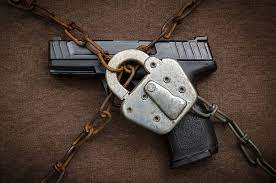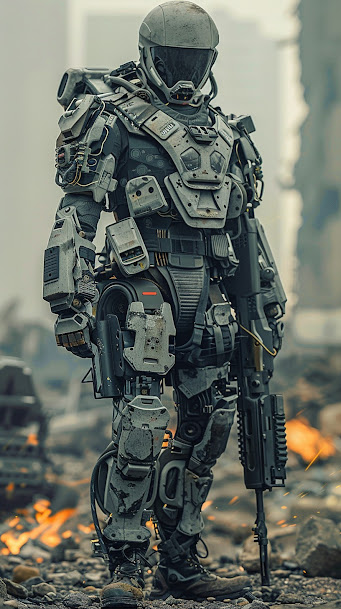Submitted Review: Black and Queer: The Uncomfortable Truth About the Intersectionality of Black LGBTQ+ Identities
Introduction: The Double Burden No One Wants to Talk About
In 2025, you’d think we’d be more evolved.
More inclusive. More unified. More intersectional.
But here’s the raw truth: Black LGBTQ+ individuals often feel like outsiders in both Black spaces and queer spaces. Too queer for the Black community. Too Black for the LGBTQ+ movement.
And yet, they’re at the forefront of cultural revolutions, political protests, and artistic breakthroughs.
So why do they still feel invisible?
In this deep-dive review, we’ll explore how Black queer and trans folks are navigating oppression from all sides, and why both the Black community and LGBTQ+ spaces are failing them.
Section 1: What Is Intersectionality—And Why It Matters More Than Ever
Coined by scholar Kimberlé Crenshaw, intersectionality is the idea that multiple systems of oppression overlap, creating unique experiences for those at the crossroads.
For Black LGBTQ+ people, this means:
-
Experiencing racism in white-dominated LGBTQ+ spaces
-
Facing homophobia and transphobia in their racial and cultural communities
-
Navigating institutions—schools, churches, media—that rarely reflect their full identity
In other words: they’re erased, othered, and tokenized—everywhere.
Section 2: Rejected by Family, Church, and Community
1. The Church: Where Identity Meets Condemnation
In many Black communities, the church is central to identity, tradition, and support. But for queer Black individuals, it’s often a place of:
-
Spiritual trauma
-
Condemnation disguised as “love”
-
Exile from their own families
Yes, Black churches have historically been forces for justice. But when it comes to queerness? Too often, they're on the wrong side of liberation.
2. “That’s Not Our Struggle”: Intra-Community Homophobia
There’s a persistent idea in some Black activist circles that LGBTQ+ issues “distract” from the real fight—racial justice.
But that framing erases Black trans women being murdered. It erases queer Black youth kicked out of their homes. It suggests that to be fully Black, you must hide your queerness.
That’s not justice. That’s selective liberation.
Section 3: Racism in LGBTQ+ Spaces—Yes, It’s Real
White-dominated LGBTQ+ spaces often preach inclusion but practice exclusion:
-
Black queer bodies are fetishized but not respected
-
White gay men appropriate Black culture—from slang to style—while ignoring Black struggles
-
Leadership in LGBTQ+ orgs remains overwhelmingly white
-
Transphobia is rampant, even within the community
Just ask any Black trans woman who’s been misgendered at a Pride event. Or any Black lesbian who’s been asked if she’s “really into girls.”
The racism is subtle—but constant. And it sends a message loud and clear:
You’re welcome here—but not too loud, not too Black, not too different.
Section 4: The Deadly Reality for Black Trans Women
This isn’t just about discomfort or exclusion. It’s about survival.
Black trans women are:
-
The most targeted demographic for violence in the U.S.
-
Routinely denied housing, healthcare, and employment
-
More likely to face police brutality, homelessness, and incarceration
And yet, they’re rarely centered in national conversations, even within LGBTQ+ movements.
Why? Because we love Black culture, but not always Black people. We uplift gay rights, but often ignore Black trans death tolls.
It’s a brutal paradox—and one that’s literally killing people.
Section 5: Media, Representation, and the Illusion of Progress
Yes, we have Lil Nas X, Laverne Cox, and Pose.
Yes, we have Black queer influencers, content creators, and TV characters.
But representation isn’t the same as revolution.
What’s missing?
-
Everyday Black LGBTQ+ lives, not just celebrities
-
Working-class, disabled, immigrant, and nonbinary Black queers
-
Unfiltered narratives that go beyond trauma or tokenism
Pop culture may finally be “ready” for Black queerness—but only if it’s sanitized, marketable, and doesn’t challenge the status quo.
Section 6: Pride Isn’t Always Safe for Everyone
Pride Month? Great in theory. But for many Black LGBTQ+ folks, mainstream Pride feels corporate, whitewashed, and disconnected.
-
Cops at Pride still spark fear—not celebration
-
Black and brown trans voices are still pushed to the sidelines
-
The original Pride—a riot led by Black and brown trans people—is often forgotten or rebranded as a “festival”
So while rainbow flags fly high, many Black LGBTQ+ individuals still feel unsafe, unseen, and unwelcome.
It’s not enough to say “Love is love.”
What about survival? What about justice? What about visibility?
Section 7: The Mental Health Crisis No One Talks About
Being Black and LGBTQ+ means living in hypervigilance:
-
Will my family disown me?
-
Will my workplace fire me?
-
Will I be profiled, attacked, or killed?
That pressure has consequences:
-
Black LGBTQ+ youth have some of the highest suicide rates
-
Mental health services are inaccessible, unaffordable, or culturally incompetent
-
Many turn to substance abuse or unsafe coping mechanisms
But few resources are designed with Black queer mental health in mind. Fewer still are funded, supported, or respected.
This is a public health crisis. And it’s being ignored.
Section 8: How the System Fails Black Queer Youth
Let’s talk statistics:
-
40% of homeless youth in the U.S. identify as LGBTQ+
-
Of that group, a disproportionate number are Black or brown
-
Many are kicked out due to religious families, homophobic parents, or lack of support
These youth face:
-
Sexual exploitation
-
Violence in shelters
-
Police harassment
Yet the systems designed to “help” often don’t understand the complex needs of queer youth of color. They're more likely to be punished than protected.
Section 9: The Reclaiming—Black Queer Joy, Resistance, and Power
It’s not all pain. It’s not all trauma.
Black queer people are also leading movements, building communities, and reshaping culture.
-
Black trans women led the original Stonewall uprising
-
Black queer artists are redefining music, fashion, and storytelling
-
Mutual aid networks by and for Black LGBTQ+ folks are filling institutional gaps
From Audre Lorde to James Baldwin, from bell hooks to Billy Porter, Black queer voices have shaped history—and they’re shaping the future.
But only if we make space for them. Not just in June. Not just when it’s trending. But every single day.
Conclusion: No Liberation Without Intersectionality
You can’t say “Black Lives Matter” and exclude queer lives.
You can’t wave a rainbow flag and ignore systemic racism.
You can’t celebrate progress while erasing the people who made it possible.
To be Black and LGBTQ+ is to live at the intersection of resistance and rejection. But it’s also to hold radical, transformative power.
We need a world where Black queer and trans folks aren’t just visible—
They’re safe. Respected. Heard. And free.
Until then, Pride isn’t pride. Justice isn’t justice. And history isn’t complete.
Call to Action:
-
Uplift Black LGBTQ+ voices—not just performatively, but consistently
-
Support Black queer-led organizations and mutual aid funds
-
Challenge racism in LGBTQ+ spaces and queerphobia in Black ones
-
Educate yourself on the full history—not the filtered version
This isn’t just about identity. It’s about life and death. Truth and power.
And the future depends on what we choose to see—and who we choose to stand with.











.jpeg)
Comments
Post a Comment